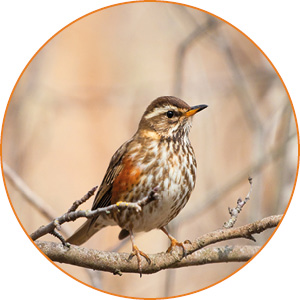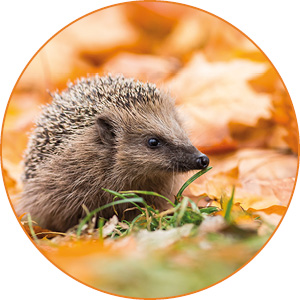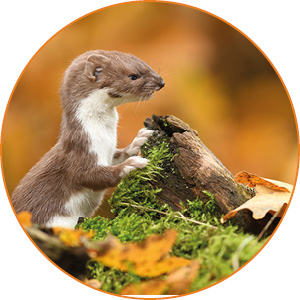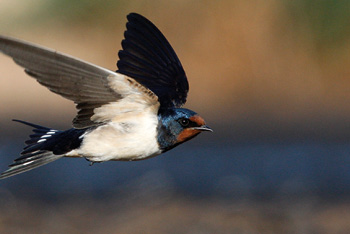Autumn life in the arboretum
Whilst many birds prepare for the long flight to warmer climates, others arrive to spend winter here. About half the UK’s bird species migrate. Some are famous for the flamboyance of their travel, such as swallows on route to their African winter or the flocks of geese and swans arriving in formation over our coasts. But for some, such as the common blackbird arriving from winter in Eastern Europe, and many of our birds of prey that leave to find more favourable hunting grounds abroad, their migration is a singular affair.
September

The Redwing, flies
around 500 miles across
the North Sea to winter
in the UK. In the face
of strong winds and
stormy weather, not
every bird will make
it; a form of natural
selection that means
only the fittest survive.
October

Hedgehogs eat as much
as they can in autumn to
build up their reserves for
hibernation. Incredibly, their
heart rate drops from their
usual 190 beats per minute
to just 20 during hibernation.
A plentiful time of year
Autumn provides a bounty of food for our wildlife.
There are blackberries in the hedgerows, crab apples,
hazelnuts and seeds are plentiful, and berries weigh
down the branches of trees. It’s a busy time for animals
to feast and horde as they prepare for hibernation or
stock up for the long winter ahead.
November

Time to horde
We are all familiar with the squirrel’s habit of storing
food for winter but they are certainly not alone. Moles
store earthworms, biting off their heads to keep them
alive but immobilised. Those that aren’t eaten will
grow a new head segment in time to escape in spring.
A weasel’s life expectancy in the
wild is just two to three years.
They must be robust hunters in
winter when food is scarce but it’s
a dangerous world for weasels too,
with owls, foxes and cats among
their many foes. Weasels produce
one or two litters of between four
to six kittens each year.
We love seeing what you've discovered on your adventures when visiting the arboretum so please share your wildlife sightings with us on Instagram using #FriendsOfWestonbirt or emailing us.
